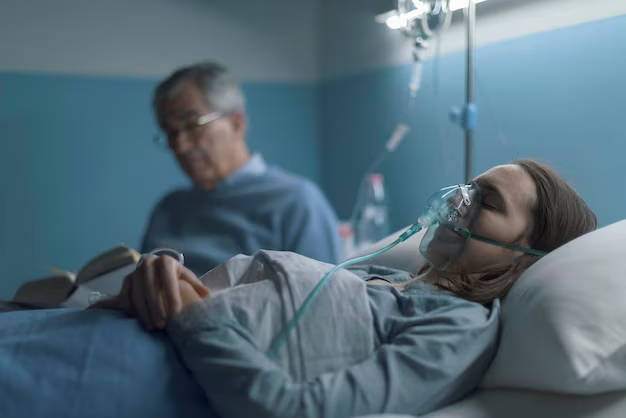Discovering Solutions for Sleep Apnea: What You Need to Know
Sleep Apnea is more than just snoring—it’s a serious sleep disorder that can affect your quality of life and overall health. Yet, for many who suffer from it, the hope of relief seems elusive. If you’re one of those looking for answers, the good news is that a combination of lifestyle changes, treatments, and technology can help manage and potentially resolve the condition. Let's delve into the facets of sleep apnea and explore practical avenues that could bring you closer to a restful night's sleep.
Understanding Sleep Apnea: The Basics
Before tackling solutions, grasping the nature of sleep apnea is key. Sleep apnea is characterized by repeated interruptions in breathing during sleep, caused by either a blockage of airflow or a lack of respiratory effort. Here are the main types:
1. Obstructive Sleep Apnea (OSA)
OSA occurs when the throat muscles intermittently relax and block your airway during sleep. This type is the most common form of sleep apnea and is often associated with obesity.
2. Central Sleep Apnea (CSA)
CSA is less common and involves the brain failing to send the correct signals to the muscles that control breathing.
3. Complex Sleep Apnea Syndrome
Also known as treatment-emergent central sleep apnea, this condition occurs when someone has both obstructive sleep apnea and central sleep apnea.
Identifying Common Symptoms
Recognizing sleep apnea is the first step to finding a solution. Symptoms can include:
- Loud snoring
- Episodes of stopped breathing observed by another person
- Sudden awakenings accompanied by gasping or choking
- Dry mouth or sore throat upon waking
- Morning headache
- Insomnia or restless sleep
- Difficulty concentrating during the day
- Irritability and mood swings
Approaches to Manage Sleep Apnea
Let’s explore natural approaches and necessary interventions that could offer substantial improvement:
Lifestyle Changes
The journey to mitigate sleep apnea often begins with simple lifestyle modifications.
Maintain a Healthy Weight
Excess weight, especially around the neck, can increase the risk of airway obstruction. Shedding a few pounds through a balanced diet and regular exercise can significantly alleviate symptoms.
Exercise Regularly
Apart from weight loss, physical activity helps reduce sleep apnea symptoms by strengthening respiratory muscles and improving sleep quality.
Sleep on Your Side
When you sleep on your back, gravity can cause the tongue and soft tissues to fall backward into the throat's airway. Sleeping on your side may help keep your throat open.
Avoid Alcohol and Smoking
Alcohol relaxes the throat muscles, which can worsen sleep apnea. Similarly, smoking irritates and inflames the upper airway, exacerbating symptoms.
Therapeutic Devices
Certain devices can help keep your airways open as you sleep.
Continuous Positive Airway Pressure (CPAP)
A CPAP machine is a common treatment that helps keep the airways open by delivering air pressure through a mask. While it’s effective, many find the equipment cumbersome.
Oral Appliances
These mouthpieces keep the throat open, ideal for those with mild to moderate sleep apnea or who cannot tolerate CPAP.
Medical Treatments and Procedures
In some instances, medical interventions may be necessary.
Surgical Options
Surgery is typically considered when other treatments have failed. Procedures might involve removing tissues, repositioning the jaws, or implanting devices to assist breathing.
Breathing Devices
Apart from CPAP, adaptive servo-ventilation and bilevel positive airway pressure (BiPAP) are also options for managing complex or central sleep apnea.
Integrating Technology for Sleep Health
Modern technology offers some innovative approaches to address sleep apnea.
Sleep Trackers and Apps
These devices help monitor sleep patterns, providing insights into sleep quality and apnea events. Although not diagnostic, they can supplement medical advice.
Implantable Devices
A newer option for OSA, certain medical devices use nerve stimulation to keep the airways open. This method is gaining popularity for those unresponsive to CPAP therapy.
Beyond the Basics: Complementary Approaches
Holistic methods, while not primary treatments, may support overall health and improve sleep quality.
Yoga and Breathing Exercises
Practices that emphasize breathing can enhance oxygen levels and strengthen respiratory function.
Herbal Remedies and Supplements
While evidence is limited, some supplements like magnesium might improve sleep. Consulting with a healthcare provider is advisable before starting any supplements.
Mindfulness and Stress Reduction
Stress contributes to poor sleep. Techniques such as meditation, mindfulness, or relaxation exercises can create a more restful sleep environment.
Empowering Change through Small Steps
Effectively managing sleep apnea involves patience and possibly combining different approaches. Here’s how you can set the stage for change:
- Track Your Symptoms: Keep a sleep diary to identify patterns or triggers.
- Consult with Healthcare Providers: Experienced specialists can tailor treatments to your needs.
- Build a Support Network: Sharing experiences with others can offer comfort and encouragement.
Sleep apnea can be a challenging disorder, but with the right knowledge and proactive steps, you can take charge of your sleep health. Bringing all of these strategies together offers a comprehensive approach to finding relief, aiding not only in curing sleep apnea but also in improving your overall quality of life.
Quick Tips & Takeaways for Managing Sleep Apnea 💡
- Keep Active: 🏃 Regular exercise can help reduce symptoms and improve sleep quality.
- Sleep Smart: 🛌 Adopt side-sleeping and regularly evaluate your sleep position.
- Lifestyle Matters: 🚭 Limit alcohol and smoking for better respiratory health.
- Opt for Devices: 🦺 Utilize CPAP or oral appliances for immediate relief.
- Stay Informed: 📲 Use technology to track sleep habits and gather data.
- Seek Advice: 👨⚕️ Engage with healthcare professionals for personalized approaches.

Related Articles
- Can a Deviated Septum Cause Sleep Apnea
- Can Apple Watch Detect Sleep Apnea
- Can Losing Weight Cure Sleep Apnea
- Can Losing Weight Help Sleep Apnea
- Can Sleep Apnea Be Cured
- Can Sleep Apnea Cause Headaches
- Can Sleep Apnea Cause High Blood Pressure
- Can Sleep Apnea Cause Weight Gain
- Can You Have Sleep Apnea Without Snoring
- Do I Have Sleep Apnea